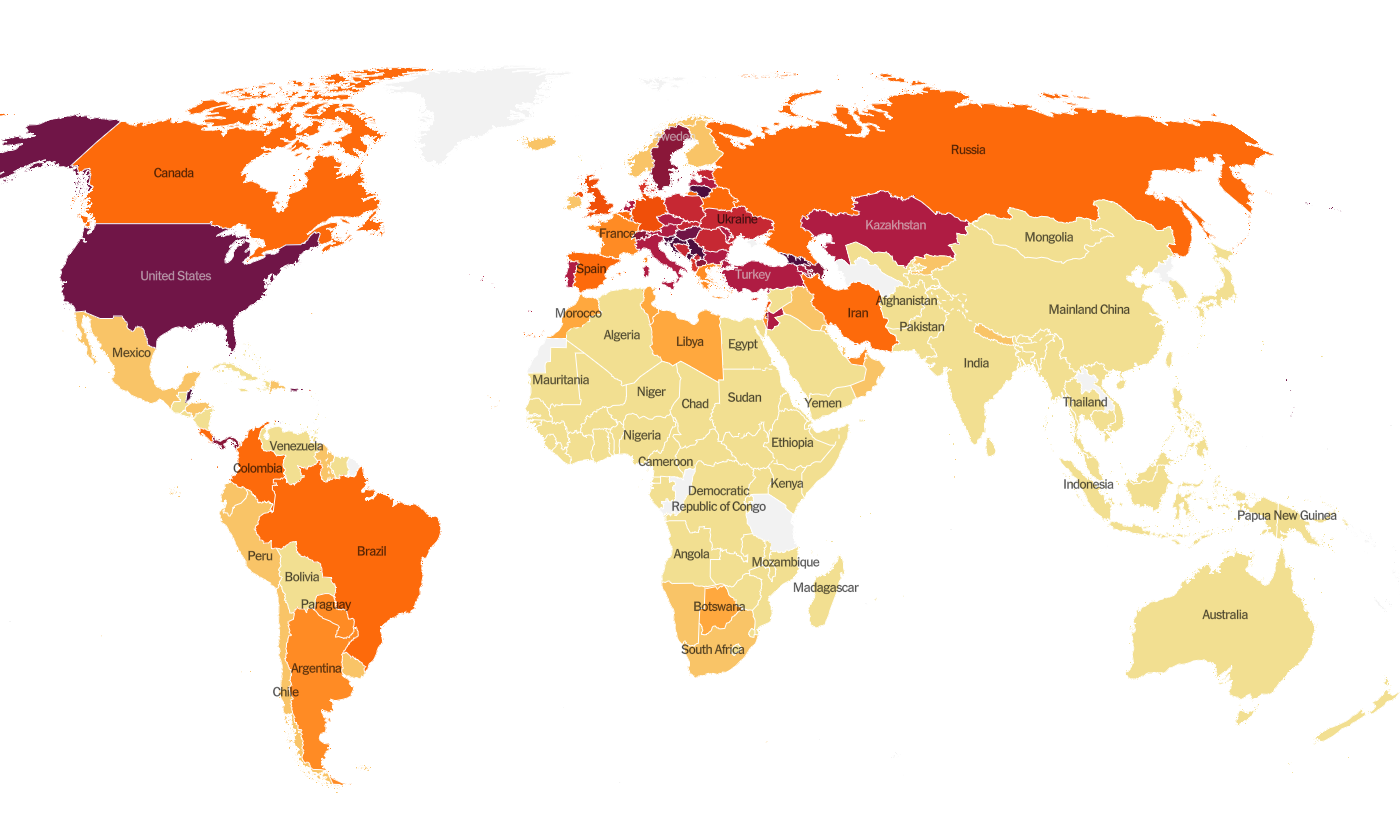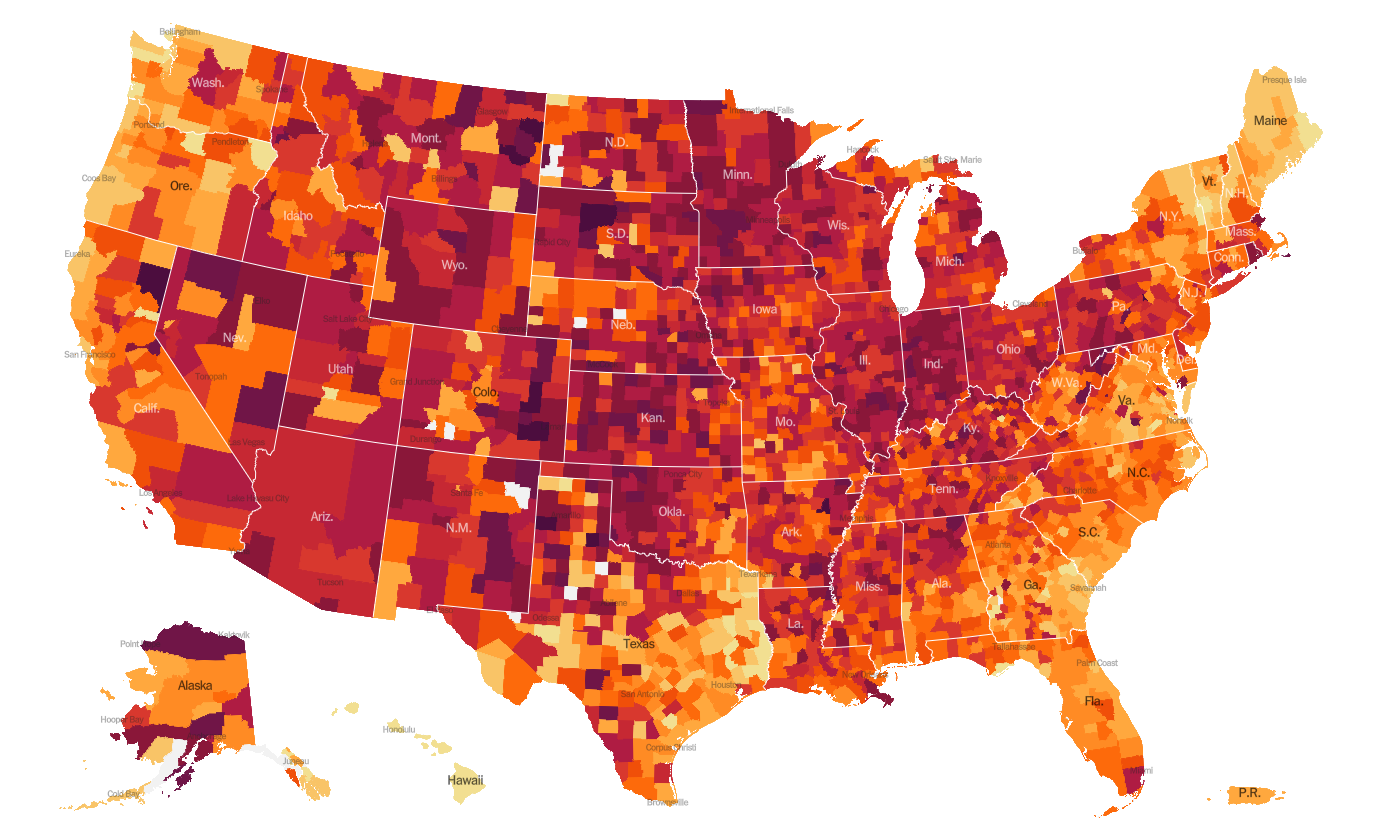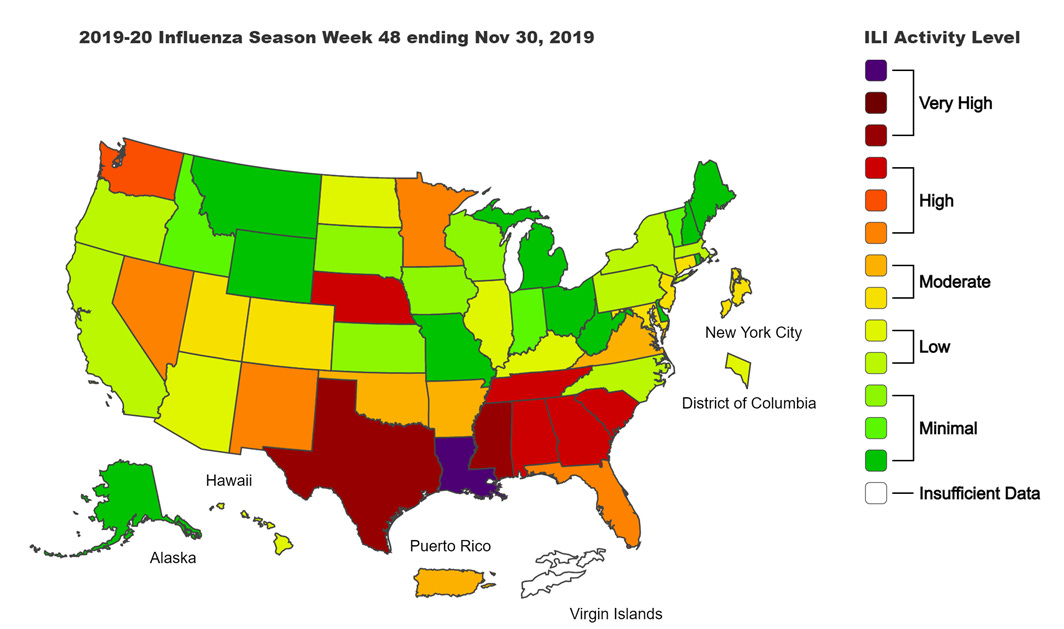The World
Globally, the SARS-CoV-2 virus that causes COVID-19 disease has sickened > 67.1 million people (+4.3 million since last week) and killed at least 1,537,400 (+76,800 in the past week) as of this morning.
The US is ranked among the top color categories for hot spots. We are ranked #12 in the world for average daily case rate per 100,000 people over the past 7 days (last week, 15th) with a rate of 59.3 compared to 48.8 last week. The top five countries for average daily case rate per 100,000 in the past week are Georgia, Serbia, San Marino, Luxembourg, and Croatia. It seems that most of Europe has beaten back their fall/winter surge.
For deaths, our average daily death rate per 100,000 over the past week is 0.7, and we are ranked #26 in the world for this (last week we were ranked #37). The top five countries for average daily death rate per 100,000 in the most recent week are Slovenia, Bulgaria, Hungary, Croatia, and Bosnia and Herzegovina.
The United States
As of this morning, there have been over 14.8 million cases (+1.4 million in the past week) and 282,313 deaths in the US (+15,555 in past week). Keep in mind that both of these numbers are probably an under-count of the situation in our country and the effect may be even worse this week due to Thanksgiving.
This week we see things intensifying for the South and things have gotten slightly better for the Southwest, especially the west panhandle of Texas. The top five states in the nation for average daily case rate in the past 7 days are Rhode Island, Indiana, Nebraska, South Dakota, and Alaska. The top five states in the nation for average daily death rate in the past 7 days are South Dakota, North Dakota, Iowa, New Mexico, and Nebraska.
The table below tells you where we are this week and how that compares to the previous week (in parentheses). The data for everything but the percent of inpatients with COVID-19 comes from the New York Times coronavirus tracker and is current as of this morning. The hospital data comes from the HHS Protect Public Data Hub that was last updated on 04Dec2020.
Next, let’s look at how seasonal influenza is impacting different states across the US. You can consult FluView any time you’d like to see this map and other data visualizations. You can read the weekly report from Georgia Department of Public Health here.
This week we see an increase in the number of states in the upper tier of the “low” category. But overall, influenza activity is low in the US right now. Compare that to where we were a year ago for week 48 in the map below.
So clearly this year is different. The things we’re doing to limit the transmission of COVID-19 are also interrupting the transmission of influenza. Good job! Remember, it’s not too late to get your flu shot. Please do so, if you haven’t already.
Georgia
Normally I would provide the Harvard Global Health Institute tool for assessing disease trends at a county level in Georgia. But they are only using PCR-based cases to compare counties because they rely on the same data source as the White House Coronavirus Task Force - USA Facts which is a repository of the data that each state wishes to share. Georgia only shares their PCR-based cases to this repository. So, using the same calculation method and color coding, here’s what the Harvard map would look like if antigen cases are included (as CDC, Johns Hopkins University, and New York Times do). Click on the map to be routed to a live image where you can click or hover over your county of interest.
There are 90 counties in the red category, 56 in the orange category and 12 counties are in the yellow zone. There is 1 county in the green category. North Georgia continues to see mostly red counties. But we are now seeing a lot of red counties along the I-75 corridor to the Florida border, and this was before the President’s rally in Valdosta this weekend. The rally itself might not be the main problem. Don’t get me wrong, I really wish there was more mask wearing and social distancing, but at least it was outdoors. However, people riding in cars together or shuttle buses to the venue or who visit a bar or restaurant afterwards (all without masks) are likely scenarios for disease transmission. It is concerning to see parts of southwest Georgia fill in with red counties, knowing how much they suffered this spring.
For today, here are the net increases for each key metric for Georgia.
Testing: 45,008 new PCR tests (a really high number, even more so for a Monday), 13% were positive. I’m not sure if this is the result of a bunch of laboratories deciding to work through the weekend, or more due to delayed reporting from Friday’s lab output. But it’s not what we typically see on Mondays. The state does not provide data regarding the number of antigen tests performed.
Cases: 5285 cases were newly reported today (4861 by PCR, 424 by antigen test). The new statewide total is 506,690 (448,683by PCR, 58,007 by antigen test). Of today’s cases, 38% came from nonrural counties outside of the Atlanta metro. Atlanta suburb counties were the second highest contributor, with 22% of cases.
Hospitalizations: 231 new COVID hospital admissions and 15 new ICU admissions. The new hospital admissions are high numbers for Georgia, given that it’s a Monday when numbers are typically low. There are currently 2502 COVID patients hospitalized and this number is 305 additional patients compared to last Monday. In fact, we haven’t seen a number this high since 20Aug. We are effectively reversing the gains we made after the summer surge. Adult ventilators are being used at 32% of our state’s capacity as of today.
There are five hospital regions using >90% of their ICU bed capacity - regions C (92%), E (93%), G (93%), L (96%) and region N (93%). Of those, region G hosted The Masters golf tournament three weeks ago. Their hospital demand for COVID-19 started to increase about 2 weeks later. The event was closed to spectators, but it’s possible that gatherings happened to watch the tournament whether in peoples homes or at restaurants or bars. In addition, it’s possible that people affiliated with the tournament took advantage of local restaurants and bars as well, potentially infecting other patrons.
Deaths: 36 newly reported confirmed deaths (net change), which is a medium-low day for us. It should be noted that nursing homes typically do not report over the weekends, and Mondays tend to be low count days for this reason. So it could be that we will see a bigger than usual numbers this week. The statewide total of deaths has topped 9000, with 9007.
The Georgia Department of Public Health County Indicators report is released on Mondays. This report provides a lot of county level data, including testing, confirmed and probable cases (i.e. those identified through the rapid antigen test) and the counties of concern as far as DPH is concerned.
Here’s a comparison of where the emerging counties are (this is code for “counties of concern”) last week compared to this week, on the right.
The new map doesn’t agree entirely with the red-yellow-green map inspired by the Harvard Global Health Institute but adding antigen cases, missing the I-75 corridor and counties in northwest Georgia.
That’s it for today. See you on Wednesday!
References
https://www.nytimes.com/interactive/2020/world/coronavirus-maps.html
https://www.nytimes.com/interactive/2020/us/coronavirus-us-cases.html?name=styln-coronavirus®ion=TOP_BANNER&block=storyline_menu_recirc&action=click&pgtype=Interactive&impression_id=97ba8610-2dbb-11eb-a0bf-4f82d045d121&variant=1_Show
https://countyindicatororeport.s3.amazonaws.com/county_indicator_report_20201123.html#emerging-counties
https://dph.georgia.gov/covid-19-daily-status-report
https://covid-gagio.hub.arcgis.com/
https://www.cdc.gov/flu/weekly/fluviewinteractive.htm
https://protect-public.hhs.gov/pages/hospital-capacity
Georgia COVID-19 Updates is a free newsletter that depends on reader support. If you wish to subscribe please click the link below. There are free and paid options available.
My Ph.D. is in Medical Microbiology and Immunology. I've worked at places like Creighton University, the Centers for Disease Control & Prevention and Mercer University School of Medicine. All thoughts are my professional opinion and should not be considered medical advice.








